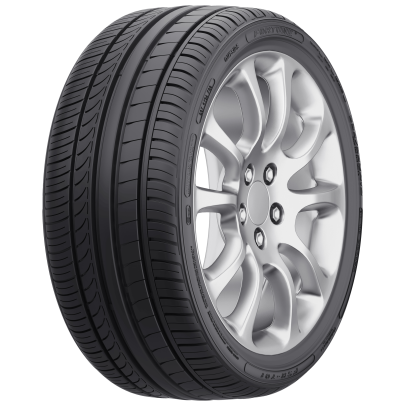How to Buy Tires: A Step-by-Step Guide
Few people like buying new tires. They are one of the more expensive maintenance items on a car, choosing the right ones for your vehicle can be confusing, and it can take a big chunk out of your day to get them installed.To get more news about
car tire, you can visit gofortunetire.com official website.
You have to do it though, as driving on worn tires with little tread left is unsafe and can leave you stranded on the side of the road. You should plan on spending at minimum a few hundred dollars to buy a set of tires and have them installed on your vehicle.
If you’re getting ready to buy new tires, follow our step-by-step guide to find out how to choose tires that will work on your car, match your driving style, and not break the bank.
1) Determine if You Need New Tires
Before you replace your tires, you should figure out if you really need to. If your car is pulling to one side, slipping around, or not confidently stopping when you brake, it might not be your tires – or it may be a simple fix like filling underinflated tires.

Our article on ways to tell it is time for new tires is an excellent guide to the warning signs that you should look out for with worn tires. You should also check your tire pressures and visually inspect your tires for punctures, uneven wear, and worn tread.
Do They Have Enough Tread? Try the Penny Test
Take a penny and insert Abraham Lincoln’s image head first into the most worn part of your tire. If you can see the top of Abe’s head, it’s time to buy new tires. Some tire experts suggest you do the test with a quarter. If you can see the top of George Washington’s head, you should be planning to buy new tires soon.
It is good to buy new tires before they become so worn that it is an emergency. You can save money if you have the time to shop for the right tires, rather than having to take whatever the shop has in stock because you’ve had a blowout and you have to get back on the road.
They Still Have Tread, but Are Your Current Tires Too Old?
Tires are only considered safe for a certain number of years. There’s a number printed on the sidewall of every tire that shows its production date.
“Tires don’t have an expiration date, but after five years they should be carefully inspected,” says Keith Willcome, a project engineer at Bridgestone Americas. “After 10 years there’s a pretty good chance that the compound has changed enough that the tire should be replaced.”
2) Choose the Right Tire Type
There's more to selecting the right tires than finding some that fit and slapping them on your ride. You need to look at your vehicle's minimum requirements, how you drive, your expectations for tire life, the weather where you do most of your driving, and the surfaces you travel on.
Your tires do more than just carry the weight of your car. They are expected to give you traction when you need to get going, allow the car to steer with confidence, and have maximum grip when you brake. They have to do all that in dry or wet conditions, without making too much noise or hurting your fuel economy.
Do You Like Your Current Tires?
A great question to ask is “what do my current tires do well, and how could they be better?” If, for example, your current tires are too loud, you can work with your tire retailer to find tires that tend to roll more quietly.
You will want to think back to what the tires were like when they were new. Since your current ones are worn, they're not a good benchmark to use when thinking about replacements.
If they didn't corner with confidence, you could look for more aggressive high-performance rubber. Was winter traction a problem? Maybe you need more capable all-season tires, or a set of winter tires just to use during the cold months. If your current tires were perfect, the buying process will be quite a lot simpler.
Learning to decipher the numbers on the sidewall of your current tires will help you figure out their characteristics. You’ll want to make sure your new tire choice meets or exceeds your vehicle’s load-carrying and speed ratings.
Finding the Right Type
You can waste a lot of money by putting the wrong tires on your vehicle. If you’re driving a Toyota Prius, you probably don’t want or need expensive ultra-high performance summer tires. Likewise, if you own a Porsche 911, installing ultra-long-wearing touring tires will kill your car’s handling potential.
Our guide to tire types describes the different styles that you will find on the market. You want to choose a set that meets your requirements without going too far. Sure, that ultra-aggressive off-road tire would give your Jeep Wrangler great extreme-terrain performance on the weekend, but it would be a handful when you are driving it down the freeway the other five days a week to work.
It is best to be a bit conservative when changing from one tire type to another. If you want a bit more of a performance edge for your sedan, maybe shift from the Grand Touring tire that it came with to a new set of performance all-season tires. Jumping to an ultra-high performance summer tire would likely be a waste of money, as your sedan will only handle so well, no matter what type of tires are on it.
